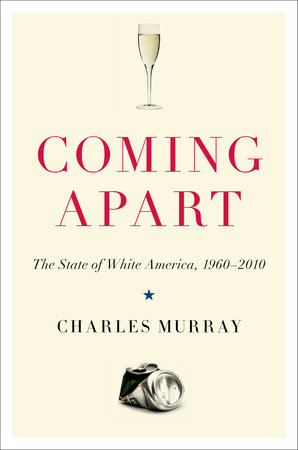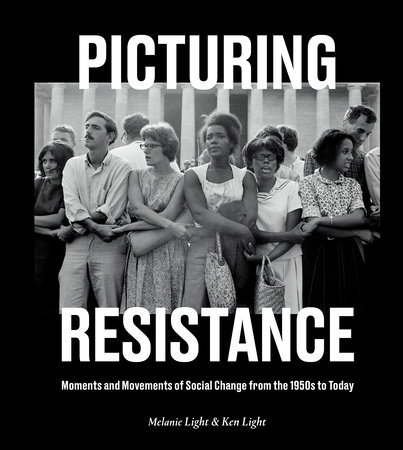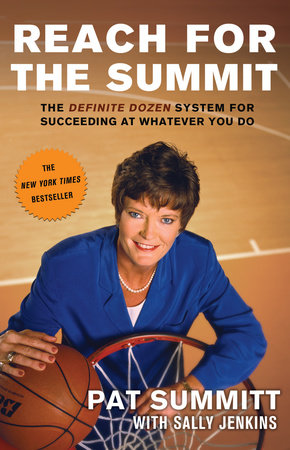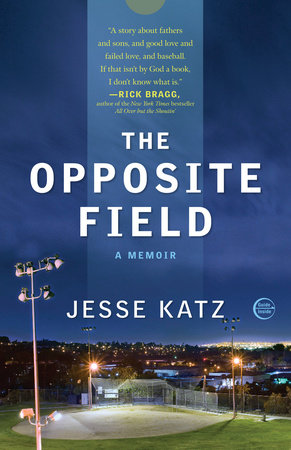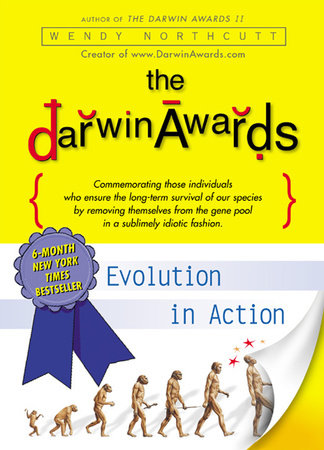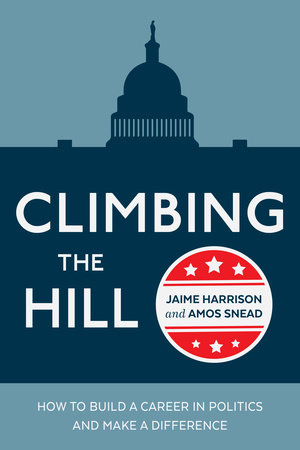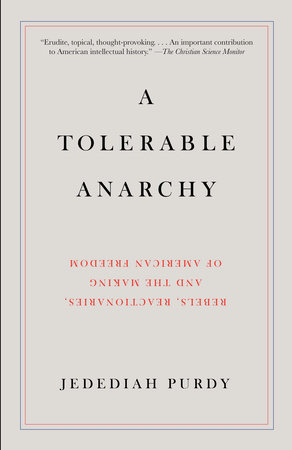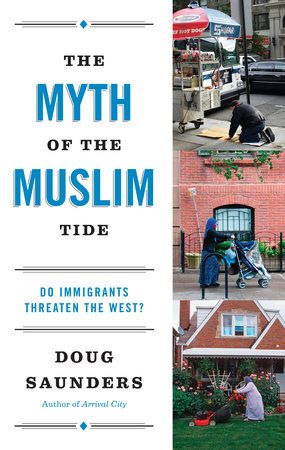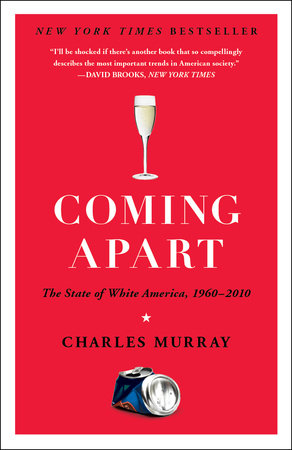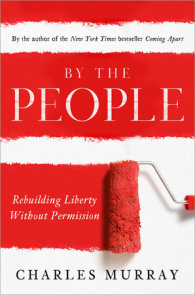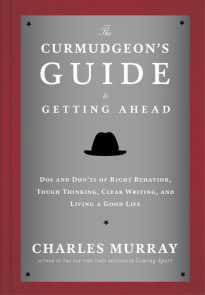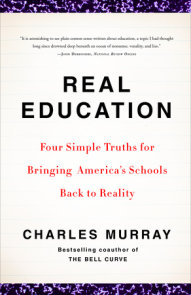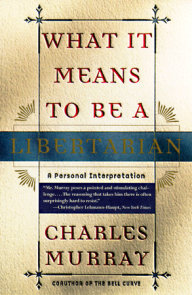Author Q&A
Q. COMING APART is the first book to address the social change that has overtaken American society; how did you come to write it?
A. It’s not the first, but I do have a radically different take on the issue: Income inequality between the classes isn’t the problem. Cultural inequality between the classes is the problem.
I came to write COMING APART partly because of my unusual personal circumstances. More than twenty years ago, in 1989, we moved our family from downtown Washington to a town of 170 people—Burkittsville, MD. In my professional life, I’ve continued to live in the world of the new upper class—I work for the American Enterprise Institute, which is deeply involved with the major players in national public policy. In my personal life, my family has lived in a rural, mostly blue-collar world, and our local concerns have been the same as those of our neighbors. I’ve been observing trends in both of those worlds at first hand, and the growing cultural separation of the two has been obvious.
COMING APART also represents the culmination of work on the relationship of human happiness to public policy that began with a book called IN PURSUIT that I wrote in the mid 1980s. This is my final and (in my opinion) best statement of some issues that have been extremely important to me for a long time.
Q. You focus solely on white America in your analysis. Why is that?
A. To get rid of distractions. If I had included everybody in the analysis, then readers could reasonably wonder how much of the problems I’m talking about are really grounded in America’s racial and ethnic history. By limiting the analysis to whites, those explanations are out the window.
Q. Hasn’t there always been an upper and lower class? What makes the current classes so different?
A. White Americans across classes—actually, Americans of all races, but it’s simpler to make the case for whites—used to share a common culture when it came the basics. Behaviors associated with marriage and family, work, religiosity, and law-abidingness were all extremely similar across classes. In the last fifty years, that’s changed. On all of those dimensions, large gaps have opened up between the white upper middle class and the white working class. The white upper middle class still behaves much as it did in 1960; the white working class has deteriorated substantially on all four of those dimensions.
Another thing has happened as well: a new upper class has developed a distinctive culture—in their delayed marriage and childbearing, child-raising practices, work environments; the things they eat and drink; their comparatively sparse exposure to mainstream film and television products; and their increasing geographic isolation in communities filled with people just like themselves.
Q. You talk about both the “upper middle class” and the “upper class.” What’s the difference? Is the middle class disappearing?
A. I use the term “upper middle class” to refer to people with at least a college degree and who work in a managerial position or one of the high-prestige professions, or someone who is married to such a person. This group constitutes about 20 percent of the white adult population. The “upper class” is a small subset of that group who are the most successful. Construed broadly, the upper class includes those who are influential within a city or region—for example, the owners of the most important local businesses; the people who run the local television stations and newspapers; the most successful lawyers and physicians. Construed narrowly, the upper class consists of those who have risen to jobs that directly affect the nation’s culture, economy, and politics—the lawyers and judges who shape constitutional jurisprudence, the people who decide how the news will be covered on national news programs, the top executives in the nation’s largest private and public institutions, the people who create the nation’s films and television drama, the most influential scholars in the nation’s elite universities and research institutes, and senior government administrators and politicians. Put roughly, you can think of the upper class as the most successful five percent of the upper middle class.
I don’t see evidence for a shrinking middle class. It’s the working class that has shrunk. In 1960, about 6 percent of the white population was in the upper middle class as I defined it and another 64 percent were in the working class, defined as people with no more than a high school education working in a blue collar job, low-skill service job, or low-skill white collar job. That left 30 percent in between, filling the jobs identified with the middle class—skilled white collar jobs, nurses, K-12 teachers, store-owners, insurance agents, and the like. By 2010, 21 percent of whites were in the upper middle class and 30 percent were in the working class by these definitions, leaving 50 percent above the working class and below the upper middle class, compared to just 30 percent in 1960. That doesn’t look like a shrinking middle class to me.
Q. Is the social breakdown you discuss in COMING APART related to the current Occupy Wall Street protests and cries of the “99%”?
A. Yes, in a way. Both the OWS movement and the Tea Party share a visceral anger at an elite that they think is bringing down the country. In effect, COMING APART says there is some reason for that anger, but it’s not a simple matter of selfish billionaires, as the OWS seems to think, or of liberal politicians imposing their own ideas on everyone else, as the Tea Party sees it. There’s an element of truth to those charges, but the larger issue is one of cultural inequality, not income inequality, and an isolation of the elite that is not anyone’s “fault” but is an inevitable side effect of some complicated forces. COMING APART tries to lay out that more nuanced picture.
Q. What can be done to bridge the gap between the classes?
The first step is for the upper middle class to start preaching what it practices. When it comes to creating families and a great environment for raising children, working hard, and obeying the law, the upper middle class is doing just fine; about as well as it always has, if not quite. But what the upper middle class won’t do is say openly that things like marriage, hard work, and honesty are the path to human flourishing for everyone, not just themselves. But our upper middle class, and especially the elites within the upper middle class, are in the grips of nonjudgmentalism. They’re afraid to say that what’s been so good in their own lives arises from cultural norms that are good for everyone.
The second step is for the upper class in particular to start thinking about where they want to live and raise their children. Do they really need to choose the neighborhood with the very richest and most highly educated population? Wouldn’t there be some benefits to living in a nice house in a nice neighborhood where everybody else wasn’t just like them?
Q. Is the dream of American social mobility dead?
A. Not even close. On the contrary, a talented young person from a disadvantaged background has never had a more open road to success. The problem is not that talent is being blocked, but that in a perfectly meritocratic society, the churning in social mobility subsides after a few generations because the most talented tend to marry each other and their children dominate the ranks of the most talented in the next generation. America’s meritocracy has not been perfect, but it has been good enough over the last fifty years that we are seeing less churning than we used to.
Q. You describe the “new elite” as being founded in large part on college education. Many predict that college will be the next “bubble” to burst (due to rising tuition, out-of-control student loans, and dwindling job prospects for graduates). If that happens, and fewer Americans end up going to college, how would that affect American society and the market for brains that you describe in the book?
A. Actually, the new elite is founded on brains. The reason that Harvard and Yale grads do so well has little to do with what Harvard and Yale teaches them. The key thing about Harvard and Yale grads is that they were admitted four years earlier, which accurately tells prospective employers that these grads are almost certainly very, very smart, and that they also showed evidence of other kinds of accomplishment by the time they were 18. I agree that college education these days has all the characteristics of a bubble. I’ll go further, and argue the BA has become a scam. But falling college enrollment wouldn’t have any effect on the upper middle class. Their children will still go to college. It wouldn’t have any effect on the most talented. The elite schools will still seek them out, no matter what their background may be. And falling college enrollment would be completely irrelevant to underlying dynamic: in today’s economy, brains are worth a lot more money than they used to be.
